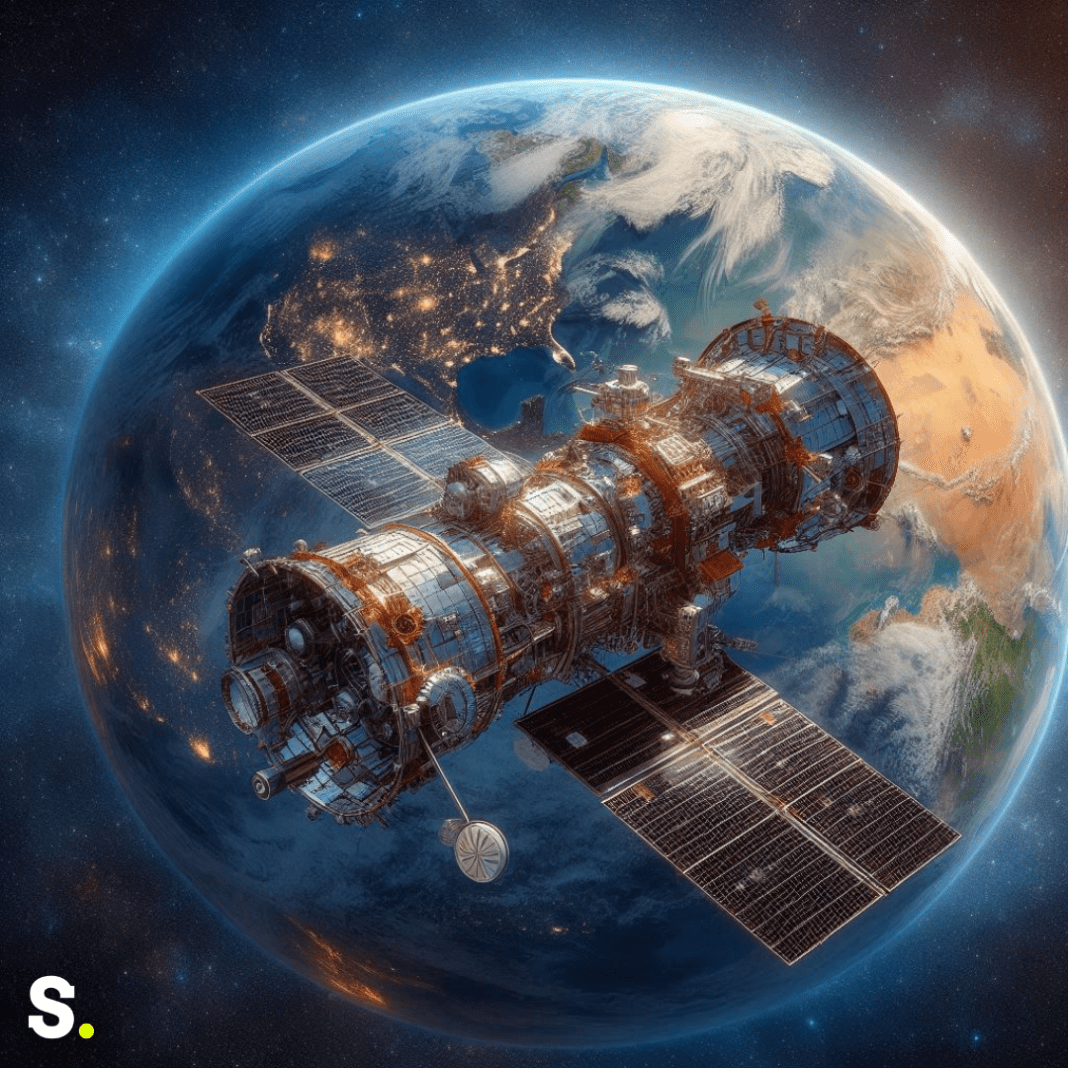The Dawn of Manned Space Exploration
Soviet cosmonaut Yuri Gagarin became the first person to orbit the Earth on April 12, 1961, making history. This groundbreaking flight aboard Vostok 1 marked a pivotal moment in space exploration and demonstrated that humans could survive and function in the harsh environment of space. Gagarin’s successful mission not only showcased the Soviet Union’s technological prowess but also spurred the United States to accelerate its own space exploration efforts.
In response to Gagarin’s achievement, the United States launched its own ambitious space program. President John F. Kennedy famously declared in 1961 that the United States would land a man on the Moon and return him safely to Earth before the end of the decade. This challenge, known as the Apollo program, set the stage for a series of monumental milestones in space exploration.
The Mercury, Gemini, and Apollo Programs
Project Mercury
Project Mercury was the United States’ first human spaceflight program, initiated in 1958 with the goal of achieving several key objectives. The primary aim was to orbit a human spacecraft around Earth, investigate the effects of space travel on the human body, and ensure the safe recovery of both the astronaut and the spacecraft. The program began with unmanned test flights and progressed to crewed missions.
Between 1961 and 1963, Project Mercury conducted 25 flights, including six crewed missions. The first American astronaut in space was Alan Shepard, who made a suborbital flight on May 5, 1961. This was followed by John Glenn’s historic orbital flight on February 20, 1962, during which he orbited Earth three times. The success of these missions demonstrated that humans could survive and operate in space for extended periods, laying the foundation for future space exploration.
The Gemini Program
Following the success of Project Mercury, NASA launched the Gemini program to address the challenges of longer-duration space missions and prepare for the upcoming Apollo missions. Named after the Latin word for “twins,” the Gemini program aimed to achieve several critical objectives, including testing equipment and mission procedures, perfecting rendezvous and docking techniques, and understanding the effects of extended space travel on astronauts.
The Gemini missions, which took place between 1965 and 1966, were instrumental in preparing for the Apollo program. Notably, Gemini IV, launched on June 3, 1965, featured the first American spacewalk. Astronaut Ed White spent 23 minutes outside the spacecraft, demonstrating the feasibility of extravehicular activities (EVAs) and paving the way for future spacewalks. The Gemini program also introduced important advancements, such as improved spacecraft maneuverability and enhanced life support systems.
The Apollo Program
The Apollo program, initiated in 1961, represented the pinnacle of American space exploration efforts. Its primary goal was to land humans on the Moon and return them safely to Earth. The program involved a series of ambitious missions, each designed to achieve specific objectives and push the boundaries of human capability.
One of the most significant achievements of the Apollo program was the successful landing of Apollo 11 on the Moon on July 20, 1969. Buzz Aldrin and Neil Armstrong, along with Michael Collins in the command module, were the first humans to step foot on the moon. With his well-known quote, “That’s one small step for man, one giant leap for mankind,” Armstrong celebrated the advancement of human ingenuity and discovery.
The Apollo missions also included several other notable milestones:
Apollo 7: Launched on October 19, 1968, Apollo 7 marked the first live television broadcast from a human spacecraft. The mission demonstrated the spacecraft’s capabilities and provided valuable data for future missions.
Apollo 8: On Christmas Eve 1968, Apollo 8 became the first crewed mission to orbit the Moon. The crew’s view of Earth from space provided a new perspective on our planet and highlighted the significance of space exploration.
Apollo 13: In April 1970, Apollo 13 faced a life-threatening crisis when an oxygen tank exploded. The crew used innovative solutions and teamwork to overcome the emergency and safely return to Earth, showcasing the resilience and resourcefulness of the astronauts and mission control.
Apollo 17: The final Apollo mission, launched in December 1972, saw astronauts Eugene Cernan and Harrison Schmitt spending more than three days on the Moon. The mission included extensive scientific exploration and sample collection, furthering our understanding of the lunar environment.
Despite its successes, the Apollo program faced significant challenges. One of the most tragic events occurred on January 27, 1967, during a preflight test of the Apollo 1 command module. A fire broke out, resulting in the loss of three astronauts. This tragedy led to major safety improvements and reinforced NASA’s commitment to ensuring the safety of future missions.
Spacewalks and International Collaboration
Spacewalks, or extravehicular activities (EVAs), have become a crucial aspect of space missions, allowing astronauts to perform tasks outside their spacecraft. Although it may sound glamorous, the phrase “spacewalk” actually refers to EVA. Spacewalks are necessary for a variety of tasks, including repairing spacecraft, installing new equipment, and deploying scientific experiments.
The history of spacewalks began with the Soviet Union’s Alexei Leonov, who made the first EVA on March 18, 1965, during the Voskhod 2 mission. Leonov spent 10 minutes outside his spacecraft, marking a significant milestone in human space exploration. This achievement demonstrated that humans could operate in the vacuum of space and set the stage for future spacewalks.
In the United States, the Gemini program laid the groundwork for future EVAs. During the Gemini IV mission on June 3, 1965, astronaut Ed White conducted the first American spacewalk. His 23-minute EVA showcased the feasibility of extravehicular activities and provided valuable insights for future missions.
How Astronauts Prepare for a Spacewalk
Preparation for a spacewalk begins well before the actual event. At NASA’s Johnson Space Center in Houston, the Neutral Buoyancy Lab is where astronauts receive intensive training. This facility houses a submerged replica of the space station, allowing astronauts to practice maneuvers and tasks in a controlled environment. For every hour spent in space, astronauts train for approximately seven hours underwater, mastering techniques and managing the challenges of working in a spacesuit.
Astronauts must also undergo decompression procedures to prevent decompression sickness, or “the bends.” Inside the space station, the air pressure is the same as at sea level on Earth, but in a spacesuit, it is much lower. Before the spacewalk, astronauts spend time in an airlock to acclimate to the shift in pressure and prevent decompression sickness.
How the Spacesuit Works
The spacesuit, known as the Extravehicular Mobility Unit (EMU), is a marvel of engineering designed to protect astronauts from the extreme conditions of space. The suit provides protection from solar radiation, debris, and extreme temperatures. In direct sunlight, temperatures can soar to 250°F (120°C), while in the dark, they can plummet to -250°F (-160°C). The suit’s design includes multiple layers to ensure durability and flexibility, allowing astronauts to perform delicate tasks while being shielded from the harsh environment.
The spacesuit includes a jet pack called SAFER (Simplified Aid for EVA Rescue) for emergencies. The SAFER unit allows astronauts to maneuver and return to the spacecraft if they become untethered. The suit’s complex design ensures that astronauts remain comfortable and protected during their spacewalks.
Major Spacewalk Milestones
First Spacewalk: On March 18, 1965, Alexei Leonov made the first spacewalk during the Voskhod 2 mission. His 10-minute EVA marked a significant achievement in space exploration.
First American Spacewalk: Ed White performed the first American spacewalk during the Gemini IV mission on June 3, 1965. His 23-minute EVA demonstrated the feasibility of extravehicular activities.
First Moonwalk: On July 20, 1969, Neil Armstrong and Buzz Aldrin became the first humans to walk on the Moon during the Apollo 11 mission. Their moonwalk marked a historic milestone in space exploration.
First Woman to Perform a Spacewalk: Soviet cosmonaut Svetlana Savitskaya became the first woman to spacewalk on July 25, 1984, during the Soyuz T-12 mission. She spent over 3 hours outside her spacecraft.
First American Woman to Perform a Spacewalk: Kathryn Sullivan became the first American woman to walk in space on October 11, 1984, during the STS-41-G mission. Her spacewalk marked a significant milestone for women in space exploration.
First African American to Perform a Spacewalk: Bernard Harris conducted the first spacewalk by an African American astronaut on February 9, 1995, during the STS-63 mission. His achievement highlighted the diversity and inclusivity of space exploration.
First All-Female Spacewalk: On October 18, 2019, NASA astronauts Christina Koch and Jessica Meir completed the first all-female spacewalk during the Expedition 61 mission. Their EVA involved replacing a failed power controller on the International Space Station.
The Legacy of Manned Space Missions and Spacewalks
The history of manned space missions and spacewalks reflects humanity’s perseverance and ingenuity. These milestones have expanded our understanding of space and our capabilities as a species. Space exploration continues to inspire and challenge us, driving technological advancements and scientific discoveries.
The Apollo program, with its monumental achievements, demonstrated the potential of human space exploration and paved the way for future missions. The Gemini program’s advancements in spacewalk technology and mission procedures provided essential insights for the Apollo missions and beyond.
Spacewalks have become an integral part of space missions, allowing astronauts to perform critical tasks outside their spacecraft. The achievements of astronauts in performing EVAs have showcased the feasibility of working in the harsh environment of space and have contributed to our understanding of space technology and human adaptability.
As humanity continues to explore the cosmos, the legacy of manned space missions and spacewalks serves as a testament to our quest for knowledge and our determination to push the boundaries of human capability. The journey of exploration is ongoing, with each mission building upon the successes and challenges of those that came before.




